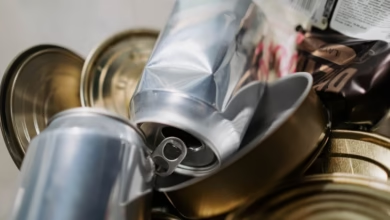Exploring Refractory Metals: The Essential Role of Tungsten and Molybdenum in High-Heat Applications and Sustainable Metal Production

In the ever-evolving landscape of metallurgy, refractory metals stand out for their remarkable ability to withstand extreme temperatures and harsh environments. High-heat-resistant metals such as tungsten and molybdenum play a crucial role in various industrial applications, including aerospace, automotive, and energy sectors. As industries increasingly rely on these resilient materials, understanding their unique properties and applications becomes essential. This article delves into the fascinating world of refractory metals, exploring their significance in high-heat applications and comparing them to precious metals within industrial contexts. Furthermore, we will examine innovative approaches in sustainable metal production and the implications for metal recycling, shedding light on how advancements in refractory metals are impacting broader trends in the metal commodities market. Join us as we navigate the intersection of refractory and precious metals, and discover how these vital materials are shaping the future of metal fabrication and construction.
- 1. Understanding Refractory Metals: The Role of Tungsten and Molybdenum in High-Heat Applications
- 2. The Intersection of Refractory and Precious Metals: A Comparative Analysis of Industrial Applications
- 3. Sustainable Metal Production: Innovations in Refractory Metals and Their Impact on Metal Recycling and Metal Trends
1. Understanding Refractory Metals: The Role of Tungsten and Molybdenum in High-Heat Applications
Refractory metals are a unique category of industrial metals characterized by their exceptional resistance to heat and wear. Among these, tungsten and molybdenum stand out as prominent examples, playing a crucial role in high-heat applications across various industries. Understanding the properties and applications of these refractory metals is essential for industries that rely on high-performance materials, such as aerospace, automotive, and energy sectors.
Tungsten, known for its remarkable melting point exceeding 3,400 degrees Celsius, is often utilized in environments that demand durability and performance. Its density and strength make it an ideal choice for heavy-duty applications, including aerospace metals used in aircraft and spacecraft components. Molybdenum, while slightly less dense, boasts excellent thermal conductivity and resistance to metal corrosion, making it suitable for use in steel production and as an alloying agent in metal fabrication.
The metallurgy of tungsten and molybdenum is critical in developing metal alloys that can withstand extreme conditions. These refractory metals are often used in combination with base metals to enhance their performance, making them invaluable in manufacturing processes that require high-temperature stability. For instance, molybdenum is frequently used in superalloys that are essential in energy metals applications, such as turbines and reactors.
Moreover, the growing focus on sustainable metal production has led to increased interest in recycling and reusing these valuable materials. Metal recycling initiatives are becoming more prominent, allowing industries to recover precious metals and rare earth metals that are essential for high-tech applications. This trend not only supports environmental sustainability but also addresses the challenges of metal mining, where the extraction of these metals can be resource-intensive.
As industries continue to evolve, the demand for refractory metals like tungsten and molybdenum is expected to rise, especially with advancements in technologies such as 3D printing metals. These processes enable the creation of complex components that were previously difficult to manufacture, further expanding the applications of these high-heat-resistant metals.
In conclusion, tungsten and molybdenum play a pivotal role in high-heat applications, showcasing the importance of refractory metals in modern metallurgy. Their unique properties contribute significantly to various sectors, ensuring the durability and performance of metal commodities used in critical infrastructures, from construction metals to jewelry metals. As the market trends shift towards sustainable practices and innovative manufacturing techniques, the relevance of these refractory metals continues to grow.
2. The Intersection of Refractory and Precious Metals: A Comparative Analysis of Industrial Applications
Refractory metals, such as tungsten and molybdenum, are renowned for their exceptional heat resistance and durability, making them integral in various industrial applications. When examining the intersection of refractory and precious metals, it becomes evident that both categories play crucial roles in modern metallurgy and metal production, particularly in sectors like aerospace, automotive, and energy.
Refractory metals are often used in high-temperature environments, where traditional metals may fail. For example, tungsten is widely utilized in aerospace metals for its ability to withstand extreme conditions, while molybdenum is favored in metal fabrication for components requiring high strength and corrosion resistance. In contrast, precious metals, including gold, platinum, and palladium, are primarily valued for their properties in electronics and jewelry, as well as for their investment potential in gold and silver investing.
The comparative analysis of these two metal categories reveals that while refractory metals excel in thermal resistance and structural integrity, precious metals are more prevalent in applications requiring conductivity and aesthetic qualities. For instance, in the realm of metal recycling, recycling processes for precious metals can yield significant economic benefits, whereas refractory metals are often recycled to maintain their unique properties for industrial applications.
Moreover, as the demand for sustainable metal production grows, the mining and recycling of both refractory and precious metals are becoming increasingly important. Rare earth metals, along with battery metals like lithium and nickel, are essential in developing advanced technologies, further emphasizing the need for efficient metal mining and recycling practices.
In terms of market trends, both refractory and precious metals are witnessing fluctuations in commodity prices, influenced by factors such as supply chain disruptions and evolving industrial demands. For instance, the rise in 3D printing technologies has opened new avenues for the use of refractory metals, while the ongoing interest in automotive metals has spurred innovations in metal alloys to improve performance and sustainability.
Ultimately, the intersection of refractory and precious metals highlights their complementary roles in advancing industrial applications. As industries continue to evolve, understanding their unique properties and applications will be vital in meeting the challenges of modern metallurgy while fostering sustainable practices in metal production and recycling.
3. Sustainable Metal Production: Innovations in Refractory Metals and Their Impact on Metal Recycling and Metal Trends
Sustainable metal production has become a crucial focus within the metallurgy industry, particularly concerning refractory metals such as tungsten and molybdenum. These high-heat-resistant metals are not only essential for aerospace and automotive applications but also play a significant role in advancing sustainable practices in metal recycling and production.
Innovations in the production of refractory metals are paving the way for greater sustainability. For instance, advancements in 3D printing metals have enabled manufacturers to create complex components with minimal waste, thus reducing the need for extensive metal mining. This is especially important as the demand for various industrial metals continues to rise, driven by sectors like construction, energy, and automotive industries.
Moreover, the recycling of refractory metals presents a promising avenue for sustainability. Metal recycling is becoming more efficient, allowing for the recovery of valuable metals without the environmental impact associated with traditional extraction methods. As industries look to reduce their carbon footprint, the recycling of non-ferrous metals and precious metals, including platinum and palladium, has gained momentum. This shift not only conserves resources but also aligns with the growing trend towards circular economies in metal commodities.
As the market evolves, new trends emerge that emphasize the importance of sustainable metal production. For example, the increasing focus on battery metals such as lithium and nickel reflects a broader commitment to sustainability within the energy sector. The integration of recycled materials into metal fabrication processes is also becoming more prevalent, with companies prioritizing the use of base metals like aluminum and copper sourced from recycled materials.
In summary, the innovations in the production and recycling of refractory metals are re-shaping the landscape of sustainable metal production. By embracing these advancements, industries can contribute to a more sustainable future while meeting the growing demand for various metal applications, from jewelry metals to construction metals. The emphasis on sustainable practices not only addresses the challenges of metal corrosion and resource depletion but also positions companies favorably in an increasingly eco-conscious market.
In conclusion, refractory metals like tungsten and molybdenum play an indispensable role in high-heat applications, bridging the gap between industrial metals and precious metals. Their unique properties make them essential for various sectors, including aerospace, automotive, and energy industries, where durability and resistance to extreme temperatures are paramount. As we delve deeper into the intersection of refractory and precious metals, it becomes clear that their applications extend beyond traditional uses, impacting areas such as metal fabrication and sustainable metal production.
Innovations in metallurgy are paving the way for enhanced metal recycling practices, ensuring that valuable resources are not wasted. This shift not only supports sustainability but also aligns with current metal trends, particularly in the context of rare earth metals and battery metals, which are increasingly vital in today’s technology-driven world. As industries continue to seek out efficient, high-performance materials, refractory metals will undoubtedly remain at the forefront.
Investors should keep an eye on the evolving landscape of metal commodities, especially as gold investing and silver investing remain popular. Understanding the unique characteristics of refractory metals alongside base metals like steel, aluminum, copper, and zinc will provide insights into future market dynamics. Furthermore, the rise of 3D printing metals signifies a transformative approach to metal mining and production, offering exciting possibilities for the future of construction metals and jewelry metals.
Ultimately, the continued exploration and utilization of refractory metals will not only enhance industrial applications but will also contribute to broader advancements in sustainable practices within the metal industry. As we look forward, the synergy between refractory and precious metals will shape the future of metallurgy, making it an exciting time for industries and investors alike.





